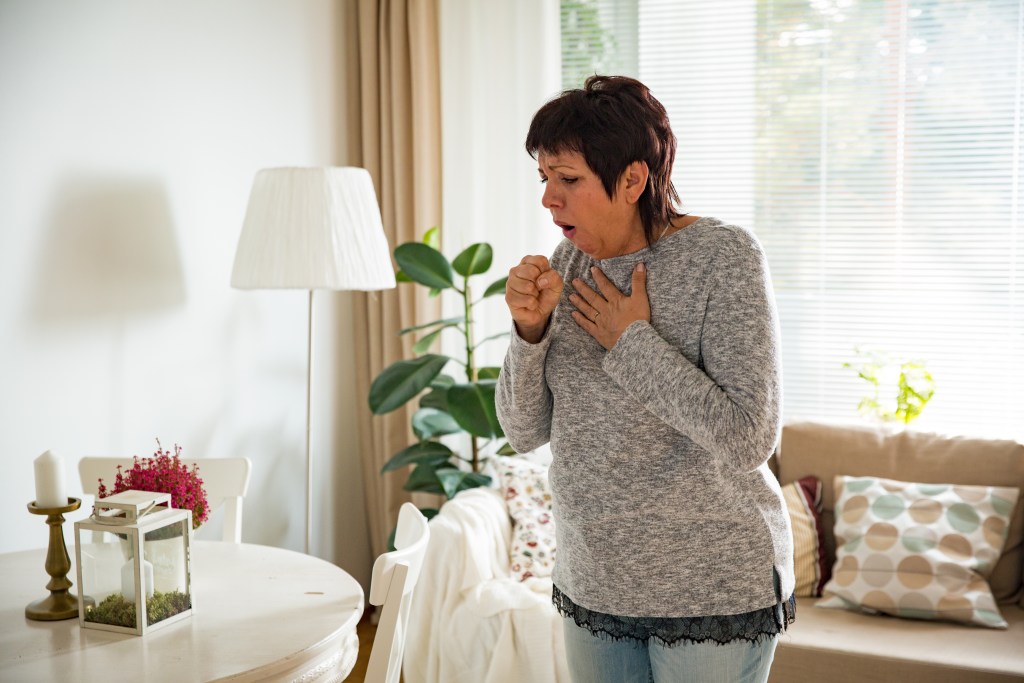This November is COPD Awareness Month: Take Action in Texas to Improve Health, Policy, and Lives
BY COPD ACTION ALLIANCE COPD impacts Texas in a Big Way Texas ranks among the states most burdened by COPD. According to the Centers for Disease Control and Prevention, the age-adjusted adult COPD prevalence in Texas is 5.6 percent, representing roughly 1.3 million Texans living with the disease. The economic toll of COPD in Texas is significant. The state spends over $2.35 billion annually on medical costs associated with COPD. Additionally, absenteeism due to the condition costs the state approximately $3.7 million each year. Prevalence is highest in rural and Gulf Coast counties, where access to pulmonologists and pulmonary rehabilitation remains limited. State surveillance data from the Texas Department of State Health Services show that Texans living in rural areas and those with lower incomes or less education face significantly higher rates of COPD. What Is COPD? COPD is a progressive lung disease that causes inflammation and airflow blockage, making breathing a daily challenge. It includes chronic bronchitis and emphysema and is now the sixth leading cause of death in the United States, claiming more than 130,000 lives each year. While smoking is a leading cause, one in four COPD patients have never smoked. Environmental exposure, occupational hazards, asthma, and genetic factors like Alpha-1 antitrypsin deficiency also contribute. The good news: COPD is highly treatable — particularly when caught early. Today’s options range from inhalers and pulmonary rehabilitation to breakthrough biologic therapies recently approved by the FDA. Suzi Media – stock.adobe.comThe Changing Faces of COPD The image of COPD as a “smoker’s disease” no longer holds true. The COPD Action Alliance’s 2025 survey found that 14 percent of respondents with COPD had never smoked, and many cited workplace and environmental exposure as key factors. Veterans are more likely to be diagnosed with COPD than civilians. Over 1 million U.S. veterans live with COPD, which is about 25 percent of the veteran population. COPD rates are rising, especially among those who served in Iraq and Afghanistan. Firefighters and first responders face increased risk from smoke and airborne toxins. Retired firefighters were 7.4 times more likely to have COPD than those still on active duty. Women are 35 percent more likely to have COPD than men, possibly due to smaller airways that are more prone to inflammation. “There’s a stigma around COPD. Many people assume I have it because I smoked cigarettes, but I’ve never smoked. I grew up in a smoker’s home and worked in jobs that contributed to my COPD,” one survey participant shared. COPD Action Alliance: Advocating for a Better Future The COPD Action Alliance is a leading advocacy coalition dedicated to improving outcomes for people living with COPD. The Alliance brings together stakeholders to push for patient-centered policies at both state and federal levels. Through their efforts, they aim to: Encourage Policies that Elevate the COPD Community: By collaborating with policymakers, the Alliance seeks to ensure COPD is recognized as a public health priority. Improve COPD Awareness and Education: The Alliance works to increase public understanding of COPD, addressing stigma and empowering patients with knowledge. Ensure Access to Appropriate Care: Advocating for better access to screenings, treatments, and clinical resources is central to the Alliance’s mission. Prioritize the Clinician-Patient Relationship: The Alliance emphasizes the importance of communication and trust between healthcare providers and patients, leading to more effective and personalized care. Yuri Arcurs peopleimages.comWhat COPD Looks Like Across America Nationwide, COPD remains one of the most under-recognized chronic diseases—yet its human and economic toll is profound. A 2024 study published in Chest and available through the National Institutes of Health estimated that from 2016 to 2019, COPD accounted for roughly $31 billion per year in direct medical costs, with total national costs projected to reach $60.5 billion by 2029. The researchers found that COPD-related medical spending averaged $4,322 per patient annually, underscoring the significant financial burden on families and the health-care system alike. Despite these figures, COPD continues to receive limited research funding and policy attention. Nearly one in three patients recently surveyed by the COPD Action Alliance reported facing barriers to obtaining medications or equipment due to prior authorization or high out-of-pocket costs. Meanwhile, 79 percent said navigating the health-care system is difficult, and nearly half believe current U.S. policies are failing to improve COPD care. COPD is both a medical and economic challenge—and addressing it will require a stronger national commitment to prevention, early diagnosis, and equitable access to treatment. Policy Priorities for a Healthier Future The COPD Action Alliance recommends targeted policy actions that could improve care for Texans and millions nationwide: Increase Awareness and Education Launch public health campaigns that address COPD stigma and encourage early diagnosis. Improve Access to Treatment Eliminate prior authorization barriers and expand telehealth and pulmonary rehabilitation in rural communities. Fund COPD Research Direct more federal and state funding toward biomedical research and data collection to close diagnostic and treatment gaps. Implement the National COPD Action Plan Fully realize the 2018 NIH blueprint for reducing the burden of COPD through education, data tracking and research coordination. Doctor or nurse caregiver showing a tablet screen to senior man and laughing at home or nursing home Lumos sp – stock.adobe.comThe Path Forward COPD is the third leading cause of death worldwide and the sixth leading cause of death in the United States. It is twice as common in rural areas as in large cities, pointing to the need for targeted awareness and healthcare interventions in rural communities. The COPD Action Alliance, in collaboration with policymakers, healthcare providers, and community leaders, aims to create a future where patients have the support and resources they need to manage their condition effectively. With increased awareness, expanded research, and improved healthcare access, Texans living with COPD can look forward to better outcomes and a higher quality of life. To learn more about COPD and the COPD Action Alliance’s efforts, please visit copdactionalliance.org. For additional resources, check out the COPD Fact Sheet, watch a video introduction to the Alliance, or read about the latest breakthroughs in biologic treatments for COPD. The COPD Action Alliance is an advocacy coalition that helps to increase awareness, support grassroots advocacy and improve COPD policy.
Chronic obstructive pulmonary disease (COPD) affects an estimated 30 million Americans, yet half remain undiagnosed. In Texas, the burden is especially high — both in human and economic terms. As November marks COPD Awareness Month, the COPD Action Alliance urges Texans to not only raise awareness but also advocate for stronger policies that improve prevention, diagnosis and treatment
BY COPD ACTION ALLIANCE
COPD impacts Texas in a Big Way
Texas ranks among the states most burdened by COPD. According to the Centers for Disease Control and Prevention, the age-adjusted adult COPD prevalence in Texas is 5.6 percent, representing roughly 1.3 million Texans living with the disease.
The economic toll of COPD in Texas is significant. The state spends over $2.35 billion annually on medical costs associated with COPD. Additionally, absenteeism due to the condition costs the state approximately $3.7 million each year.
Prevalence is highest in rural and Gulf Coast counties, where access to pulmonologists and pulmonary rehabilitation remains limited. State surveillance data from the Texas Department of State Health Services show that Texans living in rural areas and those with lower incomes or less education face significantly higher rates of COPD.
What Is COPD?
COPD is a progressive lung disease that causes inflammation and airflow blockage, making breathing a daily challenge. It includes chronic bronchitis and emphysema and is now the sixth leading cause of death in the United States, claiming more than 130,000 lives each year.
While smoking is a leading cause, one in four COPD patients have never smoked. Environmental exposure, occupational hazards, asthma, and genetic factors like Alpha-1 antitrypsin deficiency also contribute.
The good news: COPD is highly treatable — particularly when caught early. Today’s options range from inhalers and pulmonary rehabilitation to breakthrough biologic therapies recently approved by the FDA.

The Changing Faces of COPD
The image of COPD as a “smoker’s disease” no longer holds true. The COPD Action Alliance’s 2025 survey found that 14 percent of respondents with COPD had never smoked, and many cited workplace and environmental exposure as key factors.
- Veterans are more likely to be diagnosed with COPD than civilians. Over 1 million U.S. veterans live with COPD, which is about 25 percent of the veteran population. COPD rates are rising, especially among those who served in Iraq and Afghanistan.
- Firefighters and first responders face increased risk from smoke and airborne toxins. Retired firefighters were 7.4 times more likely to have COPD than those still on active duty.
- Women are 35 percent more likely to have COPD than men, possibly due to smaller airways that are more prone to inflammation.
“There’s a stigma around COPD. Many people assume I have it because I smoked cigarettes, but I’ve never smoked. I grew up in a smoker’s home and worked in jobs that contributed to my COPD,” one survey participant shared.
COPD Action Alliance: Advocating for a Better Future
The COPD Action Alliance is a leading advocacy coalition dedicated to improving outcomes for people living with COPD. The Alliance brings together stakeholders to push for patient-centered policies at both state and federal levels. Through their efforts, they aim to:
- Encourage Policies that Elevate the COPD Community: By collaborating with policymakers, the Alliance seeks to ensure COPD is recognized as a public health priority.
- Improve COPD Awareness and Education: The Alliance works to increase public understanding of COPD, addressing stigma and empowering patients with knowledge.
- Ensure Access to Appropriate Care: Advocating for better access to screenings, treatments, and clinical resources is central to the Alliance’s mission.
- Prioritize the Clinician-Patient Relationship: The Alliance emphasizes the importance of communication and trust between healthcare providers and patients, leading to more effective and personalized care.

What COPD Looks Like Across America
Nationwide, COPD remains one of the most under-recognized chronic diseases—yet its human and economic toll is profound. A 2024 study published in Chest and available through the National Institutes of Health estimated that from 2016 to 2019, COPD accounted for roughly $31 billion per year in direct medical costs, with total national costs projected to reach $60.5 billion by 2029. The researchers found that COPD-related medical spending averaged $4,322 per patient annually, underscoring the significant financial burden on families and the health-care system alike.
Despite these figures, COPD continues to receive limited research funding and policy attention. Nearly one in three patients recently surveyed by the COPD Action Alliance reported facing barriers to obtaining medications or equipment due to prior authorization or high out-of-pocket costs. Meanwhile, 79 percent said navigating the health-care system is difficult, and nearly half believe current U.S. policies are failing to improve COPD care.
COPD is both a medical and economic challenge—and addressing it will require a stronger national commitment to prevention, early diagnosis, and equitable access to treatment.
Policy Priorities for a Healthier Future
The COPD Action Alliance recommends targeted policy actions that could improve care for Texans and millions nationwide:
- Increase Awareness and Education
Launch public health campaigns that address COPD stigma and encourage early diagnosis. - Improve Access to Treatment
Eliminate prior authorization barriers and expand telehealth and pulmonary rehabilitation in rural communities. - Fund COPD Research
Direct more federal and state funding toward biomedical research and data collection to close diagnostic and treatment gaps. - Implement the National COPD Action Plan
Fully realize the 2018 NIH blueprint for reducing the burden of COPD through education, data tracking and research coordination.

The Path Forward
COPD is the third leading cause of death worldwide and the sixth leading cause of death in the United States. It is twice as common in rural areas as in large cities, pointing to the need for targeted awareness and healthcare interventions in rural communities.
The COPD Action Alliance, in collaboration with policymakers, healthcare providers, and community leaders, aims to create a future where patients have the support and resources they need to manage their condition effectively. With increased awareness, expanded research, and improved healthcare access, Texans living with COPD can look forward to better outcomes and a higher quality of life.
To learn more about COPD and the COPD Action Alliance’s efforts, please visit copdactionalliance.org. For additional resources, check out the COPD Fact Sheet, watch a video introduction to the Alliance, or read about the latest breakthroughs in biologic treatments for COPD.
The COPD Action Alliance is an advocacy coalition that helps to increase awareness, support grassroots advocacy and improve COPD policy.

